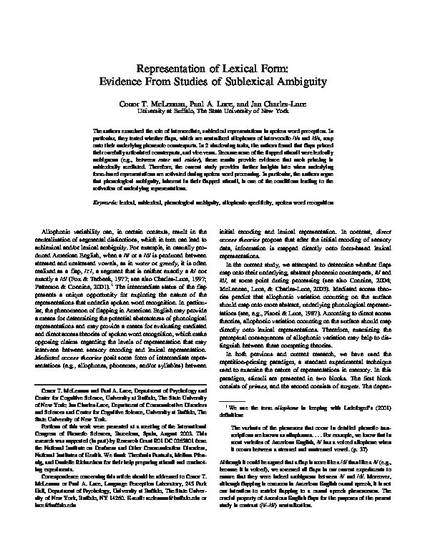
The authors examined the role of intermediate, sublexical representations in spoken word perception. In particular, they tested whether flaps, which are neutralized allophones of intervocalic /t/s and /d/s, map onto their underlying phonemic counterparts. In 2 shadowing tasks, the authors found that flaps primed their carefully articulated counterparts, and vice versa. Because none of the flapped stimuli were lexically ambiguous (e.g., between rater and raider), these results provide evidence that such priming is sublexically mediated. Therefore, the current study provides further insights into when underlying form-based representations are activated during spoken word processing. In particular, the authors argue that phonological ambiguity, inherent in their flapped stimuli, is one of the conditions leading to the activation of underlying representations.
